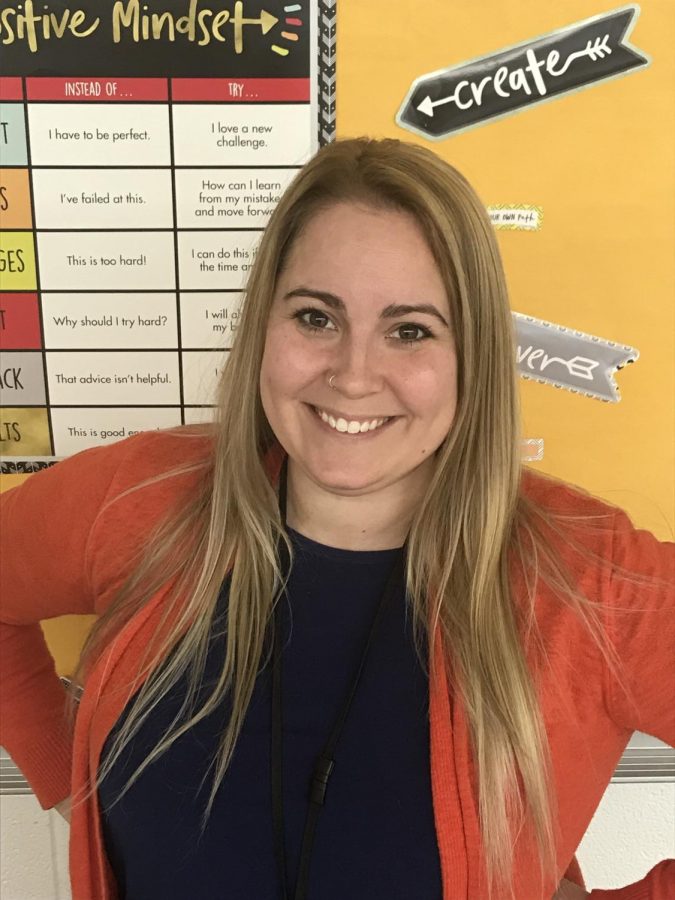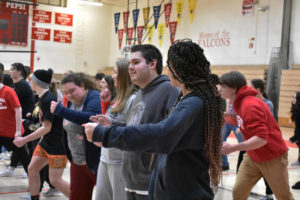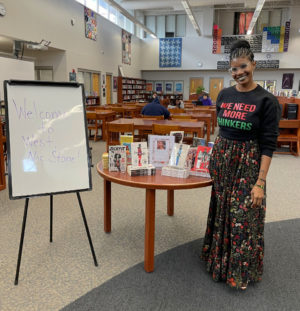FlexiSched: Flexible or not?
How are teachers and students feeling about this year’s FlexiSched?
“I think Flex gives students the option to get a more intense intervention, if they’re having more difficulty with a class,” academics foundation teacher Thia Carminati said.
March 19, 2019
It’s Monday afternoon, the bell just rang to dismiss you from your third block class, and you’re on your way to advisory. This is your time to schedule yourself for the week: surely you could have done it any time from Friday after school to now, but you always wait until advisory on Monday to choose your Flex classes for the week. You pick random study halls to fill your time, usually with teachers that you know well, simply because you don’t want your advisory teacher to put you in classes that you don’t really want to go to.
FlexiSched is a system that the Davenport Community School District started using in the 2018-2019 school year, which gives students a 35 minute window to work with teachers of their choosing for various reasons. These reasons could be for studying, making up quizzes and tests, getting extra help with a subject matter, among many other things. Academics foundation teacher Thia Carminati has a strong opinion on the subject of FlexiSched.
“I think it’s under utilized, and that it’s a good resource for a lot of the students who are falling behind, to use that time for academic remediation to get themselves caught up in classes,” Carminati said.
Good resource or not, FlexiSched is still new to the district as of the beginning of the school year. That said, some teachers and students are still learning the system, mostly how to most effectively use it.
“With the population of students that I get, they still have a hard time navigating FlexiSched. I have to schedule them, so I ensure they’re in areas of need,” Carminati said. “I don’t think everybody uses it the way it’s intended to be used.”
Extra time in the middle of the school day is an opportunity to work on missing or late classwork. There are students in the school who don’t see this as an opportunity, but rather as free time to roam the halls, making FlexiSched seem less beneficial.
“When used appropriately, it’s beneficial,” Carminati said. “I, as an educator, can see the frustration with it because there’s a minor group that skips on a daily basis and makes Flex a nuisance.”
For senior Brandon Clark the level of beneficialness of Flex Time isn’t accredited to laziness, but rather a lack of necessity for it.
“I think it depends on the student. The concept [of Flexisched] isn’t bad, some kids need to get extra help in classes and they can go where they need to, but I just go down to engineering every day, so it’s not really beneficial to me,” Clark said.
The idea of FlexiSched can vary in usefulness from student to student. Some students may prefer advisory over Flex, others may prefer Flex, and the rest might even prefer to remove Flex and advisory altogether.
“I’d rather have longer blocks [instead of Flex], considering I’m in AP classes,” Clark said.
This is not the first case of a student preferring longer classes over FlexiSched, senior Alexa Christiansen shares this opinion.
“I would rather have longer blocks. I think they’re more useful, and teachers would have more time to teach. We can’t even use advisory or Flex as a time to go to our locker,” Christiansen said.
In the beginning, Christiansen applauded Flex, but as time went on, her opinion of the period diminished.
“FlexiSched, at the beginning, was great because you could do a club or a class, but now it’s just a 35 minute window that you can’t really get much done in anyway. I think it’s kind of pointless,” Christiansen said.
Having both advisory and Flex each week, preferences are bound to form among students in terms of which they would rather have in their daily schedules.
“I like advisory more than FlexiSched, but I understand that FlexiSched gives whomever needs it a way to find where students are,” Christiansen said.
If the district followed the opinions of Christiansen and those who agree with her, some individuals like World Language teacher Tammy Burton, noticed flaws with having advisory every day.
“I don’t believe that we need as much time with advisory, if we meet every Monday, Tuesday, Thursday, and Friday with the same kids,” Burton said. “We don’t necessarily have enough content for that. I do like that we’re attempting to deal with academics.”
If not standard advisory or FlexiSched, there are still options for offering extra class assistance in the middle of the school day. During the 2017-2018 school year, every Monday after third block students would meet with their first block teachers, every Tuesday after third block they would meet with their second block teachers, and so on so forth with every school day except for early out Wednesdays.
“I think I, personally, liked when we had extra time with first block, then with second, third, and fourth,” Burton said. “For me, that one made the most sense, but I know that in some other classes, this one may be more convenient.”
Having extra time specifically set aside for each class offers equal opportunity for students to work on classwork, homework, or get caught up on things they may have missed. With FlexiSched, the level of work students get caught up on, do at home, or do for their classes in general depends entirely on the student and how they schedule theirself.
“Unfortunately, I think students are taking advantage of it and are treating it as more of a break time, rather than a time to get extra work done,” Burton said. “I understand needing to take a break during the day. I think our schedule is kind of jam packed. Sometimes we do need breaks, but I would rather have class time with my students.”
FlexiSched offers numerous classes that will help students with their classes and various works, and the offer is still extended to the students that don’t use it as intended.
“I believe, when used properly, FlexiSched can be a very helpful tool for students who have difficulty coming in before or after school,” Burton said.







